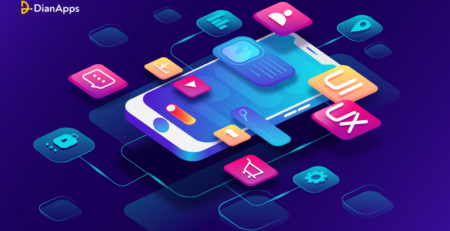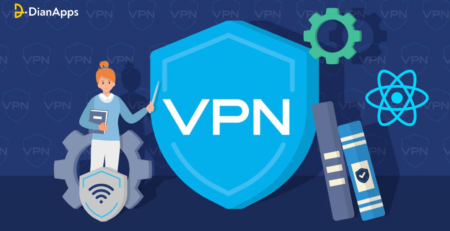Ride-Sharing App: Cost, Features, and Development Process
If you are reading this, it is pretty clear that you have made the decision to develop your own ridesharing app and join the horde of entrepreneurs who are doing the same to take advantage of this growing industry.
It’s also not surprising given that a MarketsandMarkets analysis projects the market value of the global ridesharing applications sector to climb from $85.8 billion in 2021 to $185.1 billion by 2026.

It’s more complicated than it would seem, though, given the large number of strong companies that already dominate the sector, like Uber, Lyft, Grab, and BlaBlaCar, to name a few.
There are numerous key stages that must be considered in order to design ridesharing applications that are unique and effective. They comprise carrying out a strategy plan, choosing important features, completing proper market research, and assessing expenses.
The essential components required to construct a ridesharing app are divided into two categories since there must be two constituent apps
- One for riders/passengers
- One for drivers.
In the US, it is estimated that creating such an app would cost between $150,000 and $250,000. This is based on the features that are necessary to create a workable MVP (minimum viable product). Head on to know why an MVP is an important part of the mobile app development.
Depending on where you employ your on-demand app development agency or certain expertise, the fees change.
The features you should include while developing a ridesharing app with an on-demand app and website development company like DianApps are covered in this post.
We will also learn about the many stages of the development process, as well as the platforms and necessary tech stack. Finally, we will look at the price of developing a ride-sharing app. So let’s get going.
Things You Need to Include in a Ridesharing App
A profitable business concept for aspiring entrepreneurs is the expanding on-demand ride-sharing app industry. Include the characteristics that set it apart from a typical taxi service in order to compete in the cutthroat market of social commuting. The use of cross-platform app development in ridesharing apps’ functions must be separated into versions intended for drivers and passengers, respectively.
But first, let’s learn about the typical ones before we look at these specific should-have characteristics.
1. Routine, Direction, & Geolocation
The geolocation and routing servers are the true saviors of prosperous ridesharing applications.
When it comes to creating a carpooling app, this should be the first and most crucial feature. The misconception that ridesharing applications only utilize GPS puts entrepreneurs in the transportation sector in a difficult situation. That is largely accurate, but not totally.
It hides the complex planning and computation required to determine the precise route and distance. For precise routing and ride-matching operations, they would require a routing server in addition to GPS devices.
2. Account Creation & Profile
Customer and driver registration and profiles are the two most important factors that let you track the user base following a successful ridesharing app creation.
To expedite and streamline this process, allow users and drivers to register via a social networking site or directly by email. Also, you can ask to be added to their phone number.
For driver profiles particularly, you may ask users to complete the required fields, including a photo, name, and vehicle license number. To give your mobile app development interface a feature-rich design while still giving it a customer-focused vibe, you may also consider a rating and review system.
3. A Smooth UI/UX Design
The expense of developing a ridesharing app is largely consumed by this. Consider this to have a better understanding of the importance of good UI/UX:
As both platforms require distinct frameworks, you might engage various developers and UX/UI designers for Android and iOS app development.
Let’s now examine each feature that should be included in the construction of the ridesharing app’s driver and passenger versions for carpooling.
Important Features of Ridesharing Apps for Riders/Passengers
The user experience of a ridesharing app for passengers differs greatly from that of a driver. Thus, the following are some fundamental components that your new ridesharing app should include on the rider’s side:
Geolocation
The software automatically generates a route map when the riders choose the pick-up and drop-off locations owing to its geolocation features.
Account Profiles
Users’ profiles should include information like their names, localities, top routes, and preferred forms of transportation.
Search Filters
Search criteria are important since they help passengers find drivers who are on the right route. Riders should also be able to sort offers according to pricing, car type, and even the gender of the driver (for additional safety).
Estimated Cost of a Ride
Riders often find it helpful to have cost estimates based on different routes, vehicle kinds, traffic conditions, and other factors to assist them to choose an alternative.
Cancellations and Reservations
This option must be available to users so they can travel at any time and from any location.
Call and Chat
To encourage contact and the discussion of itinerary details on both ends of the travel, chat and call alternatives should be made available.
Options for In-App Payments
Including in-app payment options makes it easier for customers to make quick and secure purchases whether they are for petrol, tolls, or driving services.
Push Notifications
A carpooling app’s push notifications function is essential since it keeps users informed about deals, discounts, ride status, and other information.
The following more complex features might possibly be added:
- Getting a ride for another person
- Preparing for upcoming rides
- Sharing among friends the cost of the transportation
Important Features of Ridesharing Apps for Drivers
There are some features on the driver’s end of the spectrum that you simply cannot do without. Some of the most fundamental driver-side functions for your ridesharing app are listed in the list below.
Login
The driver will be able to access the app using their credentials thanks to this functionality.
Account Profiles
The driver’s name, phone number, license number, location, and frequently traveled routes should all be included in the profile.
Request Accepted or Rejected
The driver will be informed of the traveler’s present location and final destination. The driver may accept or reject the request for an assignment as they see proper.
Receive Payments
Drivers can seamlessly accept payments from commuters by using this feature in the ridesharing application.
Transportation Data
With this, the driver may assess all pertinent trip information, such as the user, the pick-up and drop-off points for other commuters, and the anticipated mileage.
Navigational Integration
The drivers may use this tool to discover the most convenient route to the pickup and drop-off locations. Based on the actual traffic conditions on various routes, the optimum route is determined.
Ratings and Reviews
Building a trustworthy community is essential for your business. Both drivers and riders should be able to rate each other.
Push Notifications
Push notifications are a useful way to remind drivers to pick up passengers.
Message Passenger
In order to determine the exact pick-up route, the driver will be able to contact the guests as soon as feasible.
Want to know how to reduce mobile app development costs? Read here!
How to Build a Ridesharing App?
Building a ridesharing app can be a complex process, but here are the general steps you can follow:
Define the app’s requirements and features:
Before building the app, it’s important to define what features you want to include and what you want the app to accomplish. This will help guide the development process.
Choose a development approach:
You can choose to build the app from scratch, use a pre-built template or use a third-party platform to build your app.
Hire a development team:
You’ll need a team of developers, designers, and testers to create your app. Make sure to find a team with experience building similar apps.
Design the user interface:
The user interface should be designed with the user experience in mind. Make it easy for users to navigate and use the app.
Develop the app:
Developers will need to create the front-end and back-end of the app. The front end is what users see and interact with, while the back end handles the business logic and data storage.
Test the app:
Before releasing the app to the public, make sure to test it thoroughly to ensure that it is working as intended and is bug-free.
Launch the app:
Once the app is complete and has been tested, it can be released to the public. Make sure to promote the app to attract users.
Maintain the app:
After launching the app, make sure to continue to update and maintain it. This can include adding new features, fixing bugs, and improving the user experience.
Building a ridesharing app is a complex process, but by following these steps and working with an experienced development team, you can create a high-quality app that meets the needs of your users.
[Bonus read: How to build an app like Uber: Step-by-step guide]
Ridesharing App Cost: Estimation for On-demand Ride-Sharing App Development
As was already said, a number of things go into the creation of an on-demand application. The following are some significant variables that will affect how much it will cost to create an on-demand ridesharing app:
- Selecting a development environment (Android, iOS, or cross-platform)
- The technological foundation of the project
- A project manager, developers for iOS and Android, frontend and backend programmers, UI/UX designers, and QA engineers make up the team.
- The location of the firm that develops apps.
Although a ridesharing app with simple capabilities may run you between $25,000 and $40,000, one with full functionality could set you back between $100,000 and $150,000. As a result, selecting competent development partners is essential to the success of your application.
What Role Can DianApps Play in Building Ridesharing Apps?
Using cutting-edge technology, DianApps, a rapidly expanding IT consultancy and app development company, builds highly successful apps across a variety of industries. We take pleasure in offering our clients services like quick software app development that goes above and beyond their expectations.
Based on the thorough information provided above, you can decide which features to add to your ridesharing app and the development path you want to follow. We can assist you in developing a prototype or minimal viable product that stands out in the lucrative and booming ridesharing sector.
With our relationships with countless company owners over the years, DianApps has assisted them in growing their businesses and becoming industry leaders. With your ridesharing app concept, you can do the same.
Also Read: Why DianApps is the right outsourcing partner for your business?




